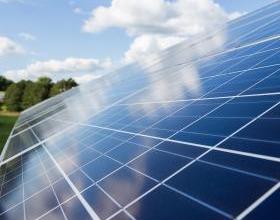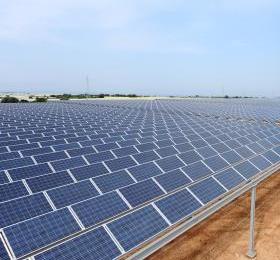What is the FER Decree?
The FER Decree (Renewable Energy Sources) is a decree that aims to support the production of electricity from plants powered by renewable sources of various kinds (photovoltaic, wind, hydroelectric and gas) in line with the European targets for 2020 and 2030 , through the definition of incentives and methods of access that promote effectiveness, efficiency and sustainability, both environmental and incentive charges.
The decree was devised by the Ministry of Economic Development to bring our country in line with European objectives, such as the production of 12 TWh from renewable sources.
In order to achieve these ambitious goals, the government has defined a series of incentives that promote the adoption and use of renewable energy sources, such as photovoltaics.
All these incentives go under the name of FER Decree.
How are the tenders organized?
The calls referring to the RES Decree are organized in 4 groups, each of which takes into consideration a renewable source and its specific specifications.
|
Procedure No. |
Call opening date |
|
1 |
September 30, 2019 |
|
2 |
January 31, 2020 |
|
3 |
May 31, 2020 |
|
4 |
September 30, 2020 |
|
5 |
January 31, 2021 |
|
6 |
May 31, 2021 |
|
7 |
September 30, 2021 |
As for photovoltaic systems, these refer to groups A and A2.
The photovoltaic systems of these groups are systems in which the photovoltaic modules are installed to replace roofs of buildings on which the complete removal of eternity or asbestos has been carried out. The surface of the modules cannot be greater than that of the removed cover.
Each call refers to a specific power value made available in each call.
|
Procedure No. |
Group A [MW] |
Group A2 [MW] |
|
1 |
45 |
100 |
|
2 |
45 |
100 |
|
3 |
100 |
100 |
|
4 |
100 |
100 |
|
5 |
120 |
100 |
|
6 |
120 |
100 |
|
7 |
240 |
200 |
|
TOTAL |
770 |
800 |
Let's look specifically at the details of the decree regarding photovoltaics.

Photovoltaics: the requirements for the incentives of the FER Decree
As for photovoltaics, we are talking about systems with a power exceeding 20 kW. In particular:
- newly built plants, fully built and reactivated, but with power less than 1 mW
- plants subject to strengthening intervention, if the difference between the value of the power after the intervention and that of the intervention power is less than 1mW
- plants subject to reconstruction with power less than 1 mW
All the details of the registration procedure can be found in the section "Title II; Procedures for registration in the register ”of the decree. Here are some parameters for participation:
- The construction works, starting from the communication of the start of work sent to the competent administration, are started after the inclusion in a useful position in the rankings.
- The habilitation bonds to build and operate the plant, including the concession titles (if any) and the connection to the mains quote accepted definitively are required.
- They are only new construction (only for photovoltaic systems).
- They comply with the provisions concerning the prohibition of access to state incentives for plants located in agricultural areas (only for photovoltaic plants).
- Before submitting a request for access to the incentives, the responsible person is required to enter the data of the installation on the GAUDĺ platform.
- Aggregate registries consisting of several plants belonging to the same group referred to in Article 8 and with a unitary power exceeding 20 kW may participate in the procedures, provided that the aggregate power of the aggregate is less than 1 MW. For the purposes of this decree, the aggregate power of the aggregate is shown.
- Access to the incentives is an alternative to the withdrawal of the energy referred to in Article 13, paragraph 3, of Legislative Decree 387/03 and to the on-site exchange mechanism.
And the requirements for participation in the competition
To complete the request for participation, the responsible person must indicate the possible percentage reduction that is offered on the reference tariff (a reduction that cannot however exceed 30%). The integration of the declaration of the documents presented after the closing of the registration procedure is not allowed.
The GSE finally forms and publishes the ranking on its site according to the following priority criteria, to be applied in hierarchical order.
- For group A: plants built on spent landfills, quarries and depleted mines, areas pertaining to landfills or contaminated sites.
- For group A2: plants built, in order, on schools, hospitals, other public buildings, other buildings open to the public.
- For all groups: systems connected in parallel with the electricity grid and with electric car charging stations, provided that the total recharging power is not less than 30% of the power of the system and that each column has a power not less than at 15 kW.
- Greater percentage reduction offered on the reference tariff.
- For all groups: aggregates of plants, referred to in Article 3, paragraph 10.
- Lower value of the fee due, calculated taking into account the percentage reduction offered.
- Priority of the completion date of the application for participation in the procedure.
- Plants included in the rankings within the limits of the power quota specifications are eligible for the incentive.
- The published ranking is not subject to scrolling.
- The transfer to a third party of a plant registered in the registers involves the reduction of the tariff due by 50%.
What are the incentives for photovoltaics made available by the FER Decree?
The basic rate is determined based on the power of the system, again on systems with a useful life of about 20 years. According to which, it provides incentive rates and incentives for new plants.
| Renewable Source |
Power (Kw) |
Useful Life of the Plants (Years) | Rate (€ / MWh) |
|
Solar Photovoltaic |
20<P<100 |
20 |
105 |
|
100<P<1000 |
20 |
90 |
|
|
P≥1000 |
20 |
70 |
The rate payable is calculated starting from the reference rate, then applying a percentage reduction equal to the discount offer that is made by the manufacturer, within the auction or register.
In addition, the fee due is further reduced, specifically:
- Reduction of 1% per year up to the date of entry into operation, applied for the first time after 15 months from the date of communication of a positive outcome of the auction and registration procedures;
- Reduction due to failure to comply with the maximum start-up times referred to in Article 10, paragraph 2, and in Article 17, paragraph 7;
- Reduction in the case of obtaining capital grants.
- Reduction of the use of regenerated components pursuant to paragraph 11, to the extent indicated in the same paragraph 11;
- Reduction due to failure to comply with the maximum start-up times pursuant to Article 10, paragraph 3,
- 50% in the case of transfers to third parties referred to in Article 9, paragraph 5, and in Article 14, paragraph 7.
In detail, the GSE operates in this way:
- For systems with P <250 kW, the GSE provides, where required, for the withdrawal of the electricity fed into the network, providing the all-inclusive fee for the net production fed into the network.
- For different systems, the GSE calculates the incentive component and if the value is positive, it delivers the amounts with reference to the net production injected into the network. In the event that the value is negative, the GSE adjusts or requests the return of the relative amounts to the subject. In all cases the energy produced by these plants remains in the availability of the producer.
- For systems with P <250 kW it is possible to choose one system or the other and it is possible to switch from one to the other no more than twice during the entire incentive period.
And for new installations?
In this case three particular scenarios open up.
1 - Installations requiring the all-inclusive tariff
For all plants with power up to 100 kW (all-inclusive tariff), the GSE recognizes the all-inclusive incentive tariff (To), which is determined with a specific formula (To = Tb + Pr; where Tb = basic incentive rate derived from the tables, Pr = total amount of any prizes to which the plant is entitled). In addition, for all the plants belonging to the A-2 group of tariff tables, an additional premium of € 12 / MWh is applied.
2 - Other installations
For other plants, the GSE proceeds to apply the incentive on the basis of the formula Inuovo = Tb + Pr + Pz (Tb = basic incentive rate obtained for each source and type of plant reduced by the percentage awarded in the auction or register procedure to which the the plant has participated with a positive outcome, Pr = amount of any prizes, Pz = hourly zone price of the area in which the electricity produced is fed into the grid).
3 - Installations with recognition or allocation of the capital contribution
In these particular cases the tariff is redetermined in the Tb value, which is assigned in the following way: Tbr = Tb * (1-R). Tb = Tb = basic incentive rate obtained for each source and type of plant reduced by the percentage awarded in the auction or register procedure to which the plant has participated with a positive outcome; R = linearly variable parameter between 0 and 0.26 (value relative to a 40% capital contribution).
What is the documentation to send to the GSE?
As you can imagine, to take advantage of the incentives it is necessary to send a specific documentation to the GSE, in the form of a substitute declaration. The documentation must be sent to the GSE through the appropriate models, all through the official website of the institution.
The documents are:
1. Copy of the documentation necessary to prove compliance with the general requirements referred to in Article 3.
2. Documentation necessary to prove the possession of the characteristics necessary for the application of the priority criteria referred to in Titles II (registers) and III (auctions).
3. Documentation necessary to prove compliance with the specific requirements for participation in auction and registration procedures.
The advantages of an ESCo
The FER Decree will allow new or already installed photovoltaic systems to have access to interesting discounts.
If your company has not yet equipped itself with a photovoltaic system, you will certainly be informing yourself.
Today there are many companies that allow you to equip yourself with a photovoltaic system, taking advantage of all the power of this technology (which nowadays is advancing more and more).
But you should know that not all companies of this type are the same.
Today relying on a company that designs and installs a photovoltaic system for your company is no longer sufficient.
That's why you should rely on an ESCo for your new photovoltaic module.
The ESCOs are specialized subjects, which:
- you will have energy savings and efficiency without having to pay for the system;
- all the energy produced by your system is yours and you use it. Thus reduce consumption and costs for the supply of electricity;
- you will never have any thoughts because the service includes maintenance and technical management throughout the rental period;
- the rental fee is almost completely repaid through savings (energy and tax) and revenues from on-site exchange.
All this you can have with Myenergy Operative Rental, designed specifically for Small and Medium Enterprises.
Find out more here.





